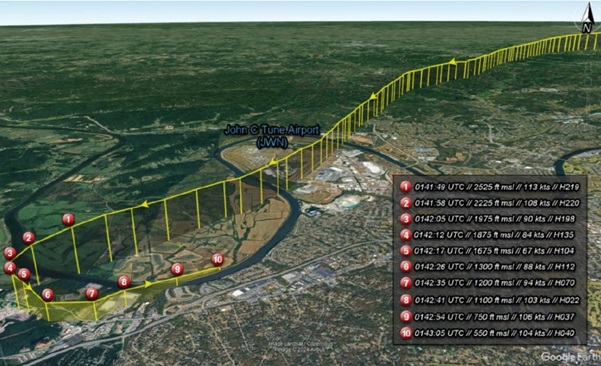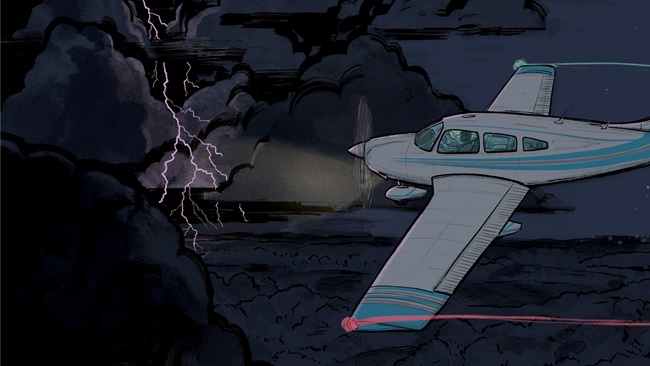Red Bull 'Plane Swap' investigation closed
NTSB final report cites the obvious
The NTSB made official on August 12 the unsurprising conclusion that the pilot’s planned departure from an aircraft in a vertical dive led to a stall and spin that “substantially damaged” the unoccupied Cessna 182 during a livestream event sponsored by Red Bull and broadcast by Hulu on April 24.
The NTSB noted that investigators did not travel to Arizona, where the events in question transpired before a live online audience, but based the agency's analysis on an interview with one of the two pilots:
The probable cause, according to the NTSB, was: “The unoccupied airplane[’]s exceedance of the critical angle of attack which resulted in a stall, subsequent inverted spin, and impact with terrain.”
The FAA issued emergency revocation orders May 10 to Aikins and Farrington, citing violations of FAR 91.105(a), 91.113(b), and 91.13(a). “As a result of the foregoing, the Acting Administrator finds that you lack the qualifications necessary to hold your commercial pilot certificate, master parachute rigger certificate, and any other certificates issued to you, excluding airman medical certificates,” the agency wrote to Farrington May 10. The agency used similar language revoking Aikins’ “commercial pilot certificate, remote pilot certificate, and any other airman certificates issued to you, excluding airman medical certificates.”
Both pilots were advised they must wait a year from the date of the revocation notice before reapplying for any of their revoked certificates. Aikins retained an attorney and filed an emergency appeal of the FAA decision before the NTSB, according to documents in the NTSB docket. The outcome of that appeal has not been made public.
The FAA, noting that Aikins had petitioned the agency for an exemption from FAR 91.105(a)(1), which the FAA had denied on April 22, two days before the attempt, also assessed on May 10 a civil penalty of $4,932, giving Aikins 15 days to request reconsideration and an informal conference with an agency attorney. A member of the team that planned and executed the attempted “plane swap” declined to comment on the NTSB findings, citing unresolved legal issues.




